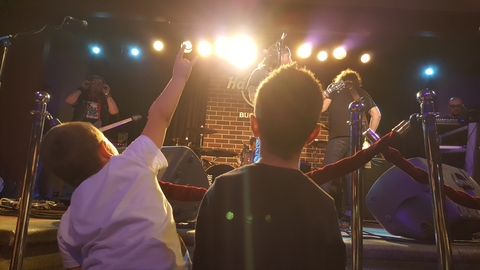How To Play The Bass Guitar

Learn all you need to know about How To Play The Bass Guitar.
So you’re considering playing the bass guitar? Although bass doesn’t receive the same respect or glory as the guitar, the instrument has a special place in any band.
Without Paul McCartney’s melodic bass, The Beatles wouldn’t have been so famous. Without John Paul Jones’s iconic riffs, you’d probably never know about Led Zeppelin. Without Flea’s funky bass lines, where would the Red Hot Chilli Peppers be today? Nowhere!
The moral of the story: playing bass is incredibly significant. The bassline is responsible for creating the undercurrent—known as the bassline—which ties a song together. It gives it a rhythmic feel and steady beat that enables the drums to flow.
We’ll give you some crucial tips and a solid foundation for playing the bass guitar. By the end of the article, you’ll know how to choose the best bass guitar, use finger techniques, tune your bass guitar, and much more!
Why You Should Learn To Play Bass
In most cases, guitarists—not bass players—enjoy the glory and limelight in a band. Is that fair? Not really, but that’s how it is. The guitar has a more prominent sound. For example, everyone remembers Slash’s iconic guitar solos on November Rain or the iconic riff on Sweet Child O’Mine. As a result, most young people want to pick up guitars instead of learning to play a solid bass line!
However, the bass guitar is a fascinating and hugely important instrument. It provides a bridge between showmanship, the guitar melody, and the backbeat of the drums.
Another reason to play bass is the instrument’s prowess. Whenever you put your headphones in, you’re likely bobbing your head to the bass instead of the guitar. If you like heavier music, such as Black Sabbath, the bass lines define the music. Blur’s Song 2 is a classic example of an iconic heavy bassline.
And let’s face it, although bass players are less famous than guitarists, there are still many high-profile bassists—such as Paul McCartney, Gene Simmons, Ronnie Wood, Alex James, Duff McKagan, John Paul Jones, Geddy Lee, Les Claypool, and Jack Bruce. There are all musical legends, not just high-profile bass players.
Is Bass Guitar Easy To Learn?
Playing the bass guitar can be easy to learn, but it can be complicated if you delve into the intricacies of the instrument. Some songs have simple basslines, whereas other basslines are complex.
The musical genre and expertise levels you want can determine how difficult it is to learn bass. For example, guitar-focused songs with more tone are easier than rhythm-focused genres, such as heavy metal and hard rock.
The physical size and thickness of the bass strings can make it more challenging for people to learn. If you have smaller hands, you can learn with short-scale basses to make it more straightforward to move up and down the neck of the bass.
Using an online bass guitar course can make the learning process far easier.
Choosing the Right Bass Guitars for You
Choosing the right bass guitar can be challenging when you first begin. However, it doesn’t need to be hard. Several factors determine your first bass guitar: size, tone, number of strings, and your overall budget. After that, you can visit your local music store.

- Size
If you’re a beginner bassist who wants a smaller instrument or has small hands—a short-scale bass could be right for you. The best examples include the Squier Bronco Bass, the Fender Mustang Bass, or the Squier Vintage Modified Jaguar Bass Special SS. These all feature a 30” neck and a lightweight body. As a result, it’s ideal for anyone suffering from shoulder and back pain.
- The Number of Strings
Most bass guitars have four strings, but some models also have five strings. Bass guitars with five strings offer more creative freedom. However, you may be better off starting on a four-string bass when you first learn.
The thinner neck on four-string bass guitars could be more straightforward to learn. Once you’ve mastered the four-string bass guitar—depending on your goals—you can move to the five-string bass guitar.
- The Tone
Personal preference determines the tone of a bass guitar. Depending on the sound you want to achieve, diverse bass guitars will offer various tones. It’s your choice to pick the ideal tone. If you prefer a warmer tone, look at the Fender Squire Range.
Fancy a deeper tone? Then check out the Player Precision Bass. Furthermore, outfitting your bass guitar with a suitable amp can help you match the tones of your favourite artists.
- Your Budget
You can spend a significant amount of money on a bass guitar. However, that’s not an issue if you want an instrument that will last you a lifetime. Although there are budget options for beginners, a more premium bass guitar could advance your learning process. Electric bass bundles are superb for bassists on a budget; they include a bass, amp, strap, and other accessories to start your journey.
So those are the four fundamental basics of learning the bass guitar. Now let’s look at some important checklists for playing bass lines:
Bass Checklist for New Learners
To learn how to play the bass guitar you need the right tools to master your bass journey—especially at the start. And there are some essentials every beginner bass player needs:
- A Digital Tuner
To ensure your bass always stays in tune, you need a digital tuner to develop your ear. You might want to work with alternate bass tunings as your skill level increases. In addition, a digital tuner helps you find the right pitch.
- Amps
There’s no better feeling than plugging in your amp and blasting your bass guitar. Whether you want to crank the amp up to 10—which we don’t recommend if you have neighbours—or want to practice at a lower volume, an amp can help you understand the true tone of your bassline.
- Cables
Cables are essential for making the connection between plugging your bass into an amplifier possible. If you want to tour or play local gigs with your bass guitar, it’s a smart idea to purchase durable cables.
- A Bass Guitar Strap
Rocking a bass guitar without a good bass guitar strap is pretty challenging. Although you’ll likely learn bass while seated, you’ll need a bass guitar strap if you ever need to stand up. However, you can also use a bass guitar strap when you’re seated to ensure the correct position.
How To Tune Your Bass Guitar
So you’ve bought an excellent bass guitar and want to learn? First, you’ll need to tune your bass guitar. If you’ve ever played the guitar before, you won’t find this challenging; the bass has the same four strings—tuned to the same notes—as the guitar.
The strings on the bass guitar are as follows:
- E – the fourth string (lowest tone).
- A – the third string
- D – the second string.
- G – the first string (highest tone).
There are many ways to tune your bass guitar; it’s down to personal preference. You can tune bass by using harmonics or tune it by ear. The Fender Tune app can make it easy to stay in tune also. However, you won’t need this app once you’ve become accustomed to playing bass.
Finger Techniques for Beginners
Putting limitations around your songwriting can be an effective way of making you commit pen to p
For many years, there has been a robust debate on whether to pick with your fingers or with a pick. It’s down to personal preference. There’s no wrong way to play bass. Some bass players—including Paul McCartney—switch between fingers and a pick for different songs. After all, certain songs can require a different playing style for the best sound. Other musicians stick to one finger technique during their careers.
Let’s look at both options:
Playing Bass With Your Fingers
If you want a smoother sound for a more funky tone, you should play bass with your fingers. Most bass guitar players who use their fingers start with their index and middle fingers to pluck the strings. With time, you can build dexterity and use your thumb to slap the strings for a highly organic tone.
Playing Bass With a Pick
If you prefer speed and versatility, playing bass with a pick might be your preferred choice. You can create quicker bass guitar notes with a pick, and you can tweak the tone by experimenting with different picks to give you a different sound.
The Best Way To Fret Your Bass Guitar
Your left-hand uses the fretboard to create the notes that your bass strings can play. You’ll need to use your left hand’s index, middle, ring, and pinky fingers to press the spaces within the frets to form these notes. Most music teachers refer to the index finger as your fret finger and your middle finger as your second finger.
You should hold the neck, use your thumb, and put it at the back of the neck (on the opposite side of the fretboard.) As your bass-playing skills grow, your thumb will become used to sliding up and down the neck while staying connected to it—which enables your other fingers to access the frets.
When your thumb is in position behind the neck, your other fingers can come around the neck from the bottom. In turn, you can begin practising using the fingers on your left hand to hold notes on the fretboard.
You’ll notice that the frets nearer to the headstock are further apart. As you move down the fret, you’ll also see that the frets become close together. Start by looking at the 3rd fret on the E-string. The frets in this area are more straightforward for beginners to use. Take the tip of your index finger, put it on the E-string 3rd fret, and press it down with your fingertip.
After that, using a pick or your fingers—you should strike the E-string. As a result, you should notice different notes when pressing down on the string. Then, alternate playing the note at the third fret of your E-string before releasing it to play the open E-string.
You can take this exercise to the other strings. However, you’ll need to adjust your hands to each string’s position and get used to moving them around. After you’ve learned to fret and play the bass using your fingers or a pick, you can learn to play bass by using tablature.
How To Read Tablature
Tablature—commonly referred to as bass tabs—is a short-hand method of writing music. Learning bass tabs is an excellent method that makes the skill of reading music easy, thus enabling you to learn any song fast. When you look at a tablature chart, you’ll see four horizontal lines. And within those lines, you’ll notice numbers.
Each horizontal line represents the strings on a bass guitar. The horizontal line at the bottom represents E, and the top line represents G. The numbers between the lines represent which fret to play on the strings.
For instance, if you notice a tablature chart with a number 3 on the lowest line or the E-string—that shows you’ll need to play the third fret of your E-string. If you notice the number 0 on any of the lines, you must play an open string.
Although the tablature is superb for learning songs fast—which is essential if you’re a live performer—you can’t use this method to represent rhythms. Tablature is the best when you can listen to music and read the tablature. By listening to the song, you’ll hear how the song’s rhythm should be played.
How To Play Bass Chords
You probably won’t encounter chords as frequently as you with bass as you would with the guitar. That said, if you learn how to play bass chords, you’ll enhance your bass-playing skills tenfold. Chords can add flavour and a bottom-heavy rhythm to a song. Basslines are the cornerstone of song structure, but learning chord progressions is highly worthwhile.
A bass chord is a mixture of three or more notes played at once. It helps produce a distinct sound. Although chords are the absolute foundation of guitar education, you can also play chords on bass too because the four chords on a bass guitar match the four chords on a guitar. As a result, many famous guitarists—such as George Harrison of The Beatles—could play both guitar and bass with comfort.
How To Play Bass Scales
Learning how to play bass scales is very important during your learning process. A bass scale is a consecutive series of notes played in descending or ascending order.
Each scale has eight notes; the set of notes is called an octave. Regardless of whether you’re playing bass, guitar, or ukulele—the notes on the scale remain the same.
Every scale starts and ends with the same note (the root note.) The final note of each scale is also the root note; however, the pitch of the note is slightly raised one octave higher than the first note.
One of the simplest scales to start with when playing bass scales is the G Major scale:
- 1st note (the root note): G
- 2nd note: A
- 3rd note: B
- 4th Note: C
- 5th note: D
- 6th note: E
- 7th note: F#
- 8th note: (the root note, but one octave higher): G
Learning how to play the popular C major scale on bass can help you play many songs. However, playing scales not only gives you finger dexterity, but they also help you spot the same tones and notes—even when you play them on different frets. What’s more, learning scales allow you to notice patterns when writing your music and basslines.
How To Create a Bassline
What inspired you to learn how to play the bass guitar? For thousands of bass players, it was a specific bassline on a song that made them fall in love with this incredible instrument. Therefore, most bass players can’t wait to learn famous bass lines or write their own.
But what is a bass line?
A bassline is a series of notes played on a bass that connects the chords, the rhythm, and the key of the song. It also helps anchor the beat and the melody of the song. Many people regard The Beatles as the masters of melodies, and Paul McCartney’s bass lines were integral to building those melodies.
Creating your bass lines requires practice, so you won’t be able to create one when you first start. You’ll need to use various skills you’ve picked up on your musical journey to craft a catchy bass line. Let’s take you through a guide to playing basslines:
- Find a Key
You’ll need to know the key of the song before you can build its bassline. You can do this by learning your scales and spotting the root note that appears throughout the song. After a while, you can craft a bassline with a key that compliments the song.
- Listen for The Timing
Bass is, for the most part, a rhythm instrument. Subsequently, it sets the pace and tone of the song. Whenever you’re building a bassline, monitor the tempo and signature of a song and use it to build a rhythm.
- Pick Apart The Chords
You should listen to the guitarist’s chords and break them down. You can create a bassline that gels with the chords in any song.
How Beginners Should Practice Bass
You’ll need excellent practice habits when you’re a new bassist. For any new musician, making regular practice part of their daily and weekly routine is essential to building proficiency and making progress. Here are some crucial tips for mastering your bass guitar practice:
- Have a Practice Space
If you have a devoted practice space, you’ll always have somewhere to play your bass guitar. Ensure this is a place where nobody can interrupt you. Also, have a stand for your bass and a comfortable seat that gives you excellent posture.
- Make Time to Practice
Even if you can only practice for five minutes daily, you can make significant progress. There are some excellent apps—such as the Fender app—that allow you to set a date and time for practice. These apps will also track your progress and give you points for a practice streak.
- Be Patient
Nobody mastered an instrument in days; it can take weeks, months, and years—depending on your level of practice. However, if you’re patient, you’ll build your bass-playing skills like a house. Don’t feel discouraged when you can’t play bass lines within a week.
- Use a Metronome
The drum and bass guitar create an ensemble’s rhythm section. When you play bass, you must have an excellent sense of steady time. You’ll need to learn how to play part of the song to create a stable feeling without the need to slow down or speed up.
An excellent way to practice speed is through a metronome. It’s a machine that you can set at different tempos, which gives you a steady speed reference to play along with. You can use a metronome for songs, scales, and exercises.
- Enhance Your Listening Skills
All the great bass players have mastered the art of listening. You need to learn to listen to other instruments while playing. That’s because, as the bass player, you must lock the drums and the melodic instruments together to create the overall sound. Therefore, you must have a keen awareness of the other instruments.
Through listening, you’ll know how fast the drummer is drumming and how quickly you need to play. In addition, you’ll know when the piano player or guitarist changes chords. You also need to listen to the vocalist to know what section of the song is next. The best bass players are masters of this. Although it takes time to master listening to music—start now and grow your craft.
Is Bass Harder Than Guitar?
For many aspiring musicians, choosing between learning the guitar or bass is a difficult choice. However, is learning bass harder than learning how to play the guitar? No. Most bass players and guitarists agree that learning the bass is more straightforward than learning the guitar. Here’s why:
- Basslines Are Typically More Basic
When you first start playing an instrument, most people want to start playing their favourite song. However, it takes time to learn your favourite songs. Fortunately, basslines are generally more basic than guitar riffs. A large portion of basslines consists of single notes played at different rhythms and rates. In contrast, many famous guitar songs have more complex arrangements.
- Fingerpicking Is Easier Than Strumming
Many people—not all—find finger plucking easier than strumming. Fingerpicking requires your index and middle fingers to pull the strings upwards gently. When you play these in quick succession, it feels like your fingers are walking on the strings. On the other hand, most people find using a plectrum more challenging than their body parts.
- You Don’t Need To Learn Chords On Bass
You can never get away from playing chords on a guitar. However, learning chords isn’t always essential when playing bass. To play chords on a guitar, you must arrange your fingers in weird shapes on the fretboard. Many beginners find this challenging because their fingers aren’t used to it. Although chords exist on the bass guitar, they’re rare and only consist of a couple of notes.
- Bass Has Longer Frets and Bigger Gaps
One of the most significant advantages of learning bass guitar is how spread out the bass guitar strings are. On a guitar, the strings are narrower and closer together—making it harder to learn. The largest frets on the bass guitar are at the end of the neck. The frets here are around 2 inches, whereas the largest frets on a guitar are one inch. All in all, this makes learning to play bass much easier.
However, are there circumstances where playing bass is harder than guitar? Sometimes. Bass can be more physically demanding than the guitar because it’s larger, has a longer fretboard, and you need to push the strings down more. You may also encounter complex rhythms on a bass guitar.
In addition, learning to play 5,6,7, and 8-string bass guitars can be challenging. You may want to learn these after mastering the 4-string bass guitar.
How Can I Teach Myself to Play Bass Guitar?
Do you need bass guitar lessons to excel as a bass player? Not exactly. The internet has enabled everyone to learn how to play musical instruments, including how to learn bass guitar from the comfort of their home through an online bass guitar course.
Learning to play bass by yourself means you should focus on chord tones and patterns to start. Ensure you mute the strings to keep the sound clean, and practice with a metronome to keep your rhythm. You should also learn tablature tabs when playing songs.
What Should I Learn First on Bass Guitar?
It can feel overwhelming when you first learn to play the bass guitar. However, here are the first things you should first learn when playing bass:
- Technique
- Chord tones and patterns
- Fretboard knowledge
- Music theory
- Songs
- Mindset
- Timing and feeling
- How to read music
You should always start by mastering your technique. From there, you can move toward music theory and fretboard knowledge. These are some of the most solid bass lines to learn when you first play bass and play songs:
- Nirvana’s – Come As You Are
- The O’Jays – I Love Music
- The Black Crowes – She Talks To Angels
- Green Days – Longview
- Robert Cray – Phone Booth
Start Start Learning Bass Online Today
Don’t hesitate if you’re considering learning to play the bass guitar. This incredible instrument is fulfilling and fascinating. It can transform your knowledge of music and spark a fantastic creative outlet.
The Beginner Bass Guitar Course is the perfect place to begin. With over 38 unique bass lessons spread over 7 detailed modules—you’ll master playing bass in no time at all! If you enjoyed this content, check out our article on How To Be a Session Guitarist.
From the blog

Rockstars in Training: The Best Kids’ Electric Guitars for 2024

Redefining Your Riffs: How Electric Guitar Strings Shape Your Sound


